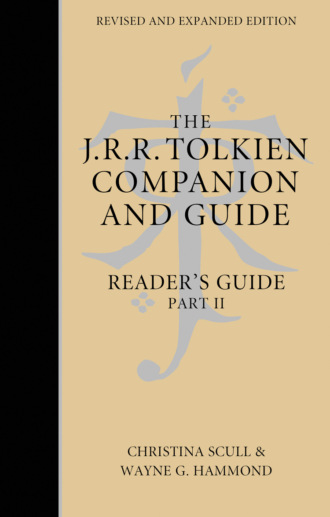The J. R. R. Tolkien Companion and Guide: Volume 3: Reader’s Guide PART 2

Полная версия
The J. R. R. Tolkien Companion and Guide: Volume 3: Reader’s Guide PART 2
Настройки чтения
Размер шрифта
Высота строк
Поля
Конец ознакомительного фрагмента
Купить и скачать всю книгу


